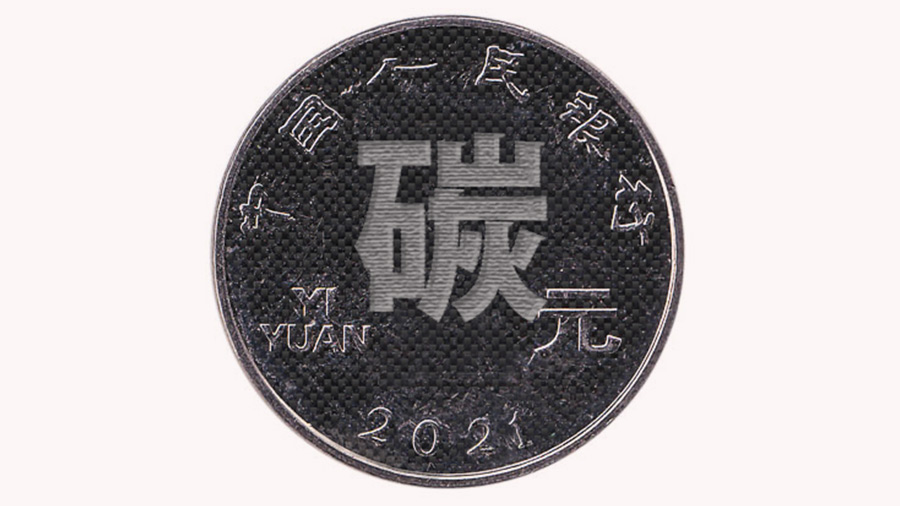Carbon Trading with Chinese Characteristics
- China incentivizing new energy programs
- Residents swapping carbon for cash
- Hydrogen vehicle fuel cell technology also prioritized
China’s President Xi Jinping headed the 9th meeting of the Central Financial and Economic Affairs Commission on Monday, with the main themes under discussion being the 2030 Carbon Peak and 2060 Carbon Neutrality goals recently announced at the Two Sessions meetings.
China’s carbon agenda has called for a ‘virtuous development cycle’ of industrial and financial upgrades to enable these to be met. China is already the world’s largest carbon market, and this will assist with the development of carbon-related financial market ambitions.
This strategy is supported by the energy bureau, environmental ministry, Central Bank, and financial regulators.
New energy subsidies
Chinese government subsidies will continue to support new energy technology and companies. In 2020, US$270 billion of the total US$300 billion in domestic energy subsidies went to the wind and solar industries. Wind, solar, hydropower, and new energy vehicles will continue to benefit.
China launched its national carbon exchange on February 1 this year and intends to use its financial clout to incentivize traditional energy companies and industrial carbon emitters to upgrade to greener energy sources and technologies. The national carbon exchange is currently having operating and trading systems installed and will commence trading on June 30, 2021.
China residents to obtain carbon cash for savings
Guangzhou has already launched China’s first local Carbon Exchange Platform, where local residents can earn carbon coins (credits) by opting for low-carbon transportations and saving on water and electricity usage. The carbon coins can be exchanged for merchandise or cash. The Guangzhou pilot scheme was launched on December 24, 2019 and is expected to be rolled out on a national basis. With a population of 1.4 billion, having local households do their bit is seen as an intrinsic part of reducing the overall carbon footprint, and China is prepared to motivate its domestic population to do so.
This financially incentivized low-carbon lifestyle will be encouraged by introducing further monetary incentives for individuals, families, and residential units; these are being designed alongside the implementing policies such as ‘Carbon Trading with Chinese Characteristics’. The Chinese system, gleaned from studying other global programs, manages speculators and corruption, unlike earlier global models, and stays to the main aims.
Elsewhere, Dezan Shira & Associates’ Chris Devonshire-Ellis is interviewed by Breakbulk Magazine on the subject in their latest issue here.
New energy vehicles
In tandem with this, hydrogen has been listed as a major energy resource in China for the first time in the Energy Law of the People’s Republic of China, which is currently under consultation. This has been identified as a separate category from plug-in electric vehicles (PEV) and promotional policies of this technology has been divided between the different categories of new energy vehicles (NEV).
China’s Ministry of Finance, alongside the Ministry of Industry and Information Technology, the Ministry of Science & Technology, the National Development & Reform Commission, and the China National Energy Administration have issued the Notice of Five Ministries regarding the Development of Fuel Cell Vehicle Demonstration (五部门关于开展燃料电池汽车示范应用的通知) recently. It promotes a four-year program aimed at the development of hydrogen fuel cell technology in China.
Hydrogen fuel cell technology is treated as a key technology by the Chinese government. It produces efficient energy, zero pollution, and low noise and has the following applications:
- Fuel Cell energy will become the preferred choice for ships. China Shipbuilding Industry Corporation (CSIC), China’s leading shipbuilder, announced that it would be supplying fuel cell-battery powered ships along the Yangtze River, Pearl River, and the Bohai Sea areas from this year.
- Fuel Cell batteries are also ideal for drones. China is now the third country in possession of independent fuel cell-powered drone technology, after the US and Germany, while the technology increases China’s competitiveness in global auto technologies.
- Fuel cell vehicles are also set for public and commercial introduction. By 2025, China aims to run 50,000 fuel cell vehicles (FCV) on the streets, among which 10,000 units will be FC commercial vehicles, and 40,000 units FC passenger cars. By 2030, the aim is to run over one million FCVs on the streets. To assist that, the purchase of FCV will be incentivized, with policy strategies developed aimed at subsidizing the purchase of FCVs by domestic consumers.
These initiatives spell the end for coal this decade, usher in gas – of which Russia is a major supplier – in turn to be taken over by renewables from 2060. These have very specific implications for foreign investors in China and will see investment in these sectors rapidly expand. Given the continuing US dependency upon oil and coal, China could emerge as a major global brand producer of NEV within a decade, in a radical global energy reset that will change global dynamics.
We are grateful to The China Big Idea for the use of their statistics in this article. Please see: www.chinabigidea.info
Related Reading
About Us
China Briefing is written and produced by Dezan Shira & Associates. The practice assists foreign investors into China and has done so since 1992 through offices in Beijing, Tianjin, Dalian, Qingdao, Shanghai, Hangzhou, Ningbo, Suzhou, Guangzhou, Dongguan, Zhongshan, Shenzhen, and Hong Kong. Please contact the firm for assistance in China at china@dezshira.com.
Dezan Shira & Associates has offices in Vietnam, Indonesia, Singapore, United States, Germany, Italy, India, and Russia, in addition to our trade research facilities along the Belt & Road Initiative. We also have partner firms assisting foreign investors in The Philippines, Malaysia, Thailand, Bangladesh.
- Previous Article China Still a Tier-3 Manufacturer in Global Rankings
- Next Article Investieren im Industriepark Suzhou: Ein kurzes Profil










